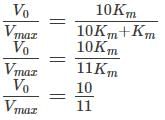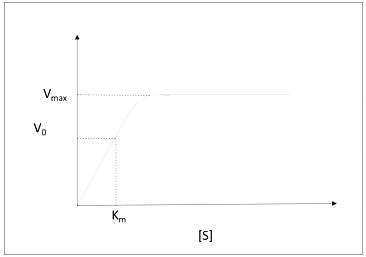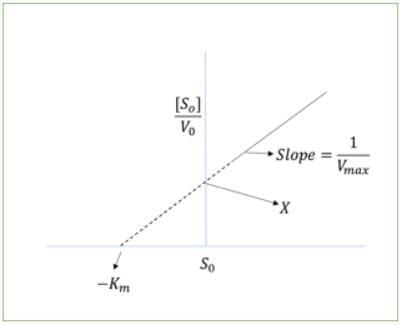Chemistry Exam > Chemistry Tests > Physical Chemistry > Test: Michaelis Menten Kinetics - Chemistry MCQ
Test: Michaelis Menten Kinetics - Chemistry MCQ
Test Description
10 Questions MCQ Test Physical Chemistry - Test: Michaelis Menten Kinetics
Test: Michaelis Menten Kinetics for Chemistry 2025 is part of Physical Chemistry preparation. The Test: Michaelis Menten Kinetics questions and answers have been
prepared according to the Chemistry exam syllabus.The Test: Michaelis Menten Kinetics MCQs are made for Chemistry 2025 Exam. Find important
definitions, questions, notes, meanings, examples, exercises, MCQs and online tests for Test: Michaelis Menten Kinetics below.
Solutions of Test: Michaelis Menten Kinetics questions in English are available as part of our Physical Chemistry for Chemistry & Test: Michaelis Menten Kinetics solutions in
Hindi for Physical Chemistry course. Download more important topics, notes, lectures and mock
test series for Chemistry Exam by signing up for free. Attempt Test: Michaelis Menten Kinetics | 10 questions in 20 minutes | Mock test for Chemistry preparation | Free important questions MCQ to study Physical Chemistry for Chemistry Exam | Download free PDF with solutions
Detailed Solution for Test: Michaelis Menten Kinetics - Question 1
Test: Michaelis Menten Kinetics - Question 2
___________ is defined as the enzyme’s binding efficiency with its appropriate substrate through optimized multiple non-covalent interactions.
Detailed Solution for Test: Michaelis Menten Kinetics - Question 2
Detailed Solution for Test: Michaelis Menten Kinetics - Question 3
Test: Michaelis Menten Kinetics - Question 4
Which of the following is based on rearrangement of Lineweaver Burk plot equation by multiplication of [So] factor?
Detailed Solution for Test: Michaelis Menten Kinetics - Question 4
Detailed Solution for Test: Michaelis Menten Kinetics - Question 5
Detailed Solution for Test: Michaelis Menten Kinetics - Question 6
Detailed Solution for Test: Michaelis Menten Kinetics - Question 7
Detailed Solution for Test: Michaelis Menten Kinetics - Question 8
Test: Michaelis Menten Kinetics - Question 9
Which of the following assumption was not made in rapid equilibrium model?
Detailed Solution for Test: Michaelis Menten Kinetics - Question 9
Test: Michaelis Menten Kinetics - Question 10
Miachelis Menten model is also referred to as “rapid equilibrium model”.
Detailed Solution for Test: Michaelis Menten Kinetics - Question 10
|
90 videos|144 docs|67 tests
|
Information about Test: Michaelis Menten Kinetics Page
In this test you can find the Exam questions for Test: Michaelis Menten Kinetics solved & explained in the simplest way possible.
Besides giving Questions and answers for Test: Michaelis Menten Kinetics, EduRev gives you an ample number of Online tests for practice







 where
where















